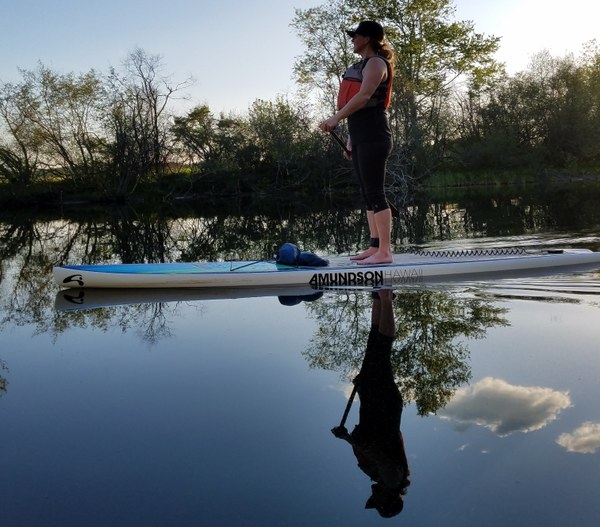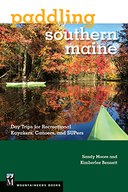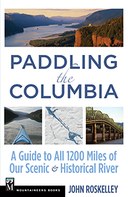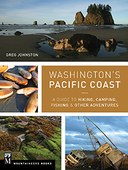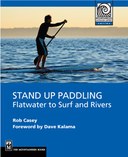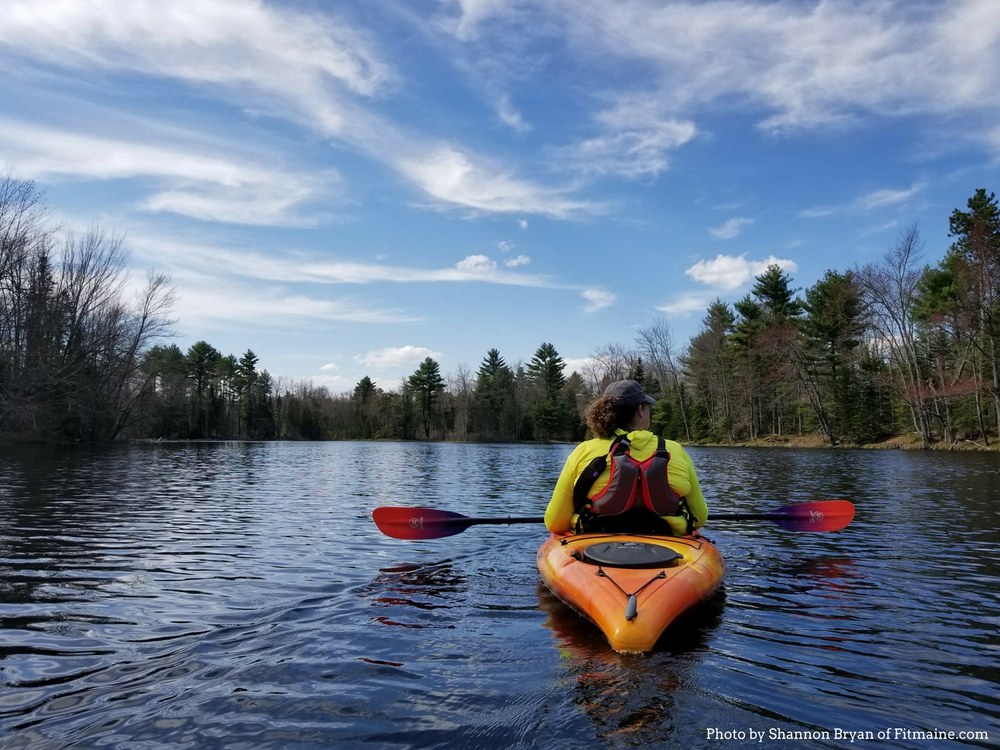
Routine is important when making sure you stay safe on the water!
I have been a recreational kayaker for twenty five years and paddle often. I kayak on slow moving rivers, ponds, lakes, and protected salt water coves. I continue to improve my skills as I gain even more experience and become involved with various paddling communities. I have learned that most of what you can do to stay safe while paddling happens off the water.
As a seasoned paddler I would advise all paddlers, beginners to advanced, to develop a routine and stick with it. When I take friends paddling for the first time they often comment on how easy I make things look like loading and unloading my gear and getting in and out of my kayak. It looks easy because I have developed systems/methods that work for me and I do them the same way each time.
Before getting on the water learn how to secure your kayak, canoe, or SUP to your vehicle properly to keep you and the people driving near you safe. Take time to research and practice ways to get in/on and out/off of your kayak, canoe, or board. These skills will become habits.
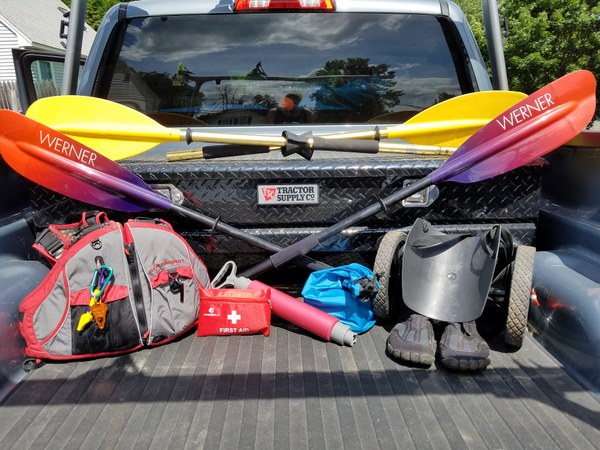
Part of my routine involves keeping all of my gear in the ‘toolbox’ on my truck. You will find having all of your equipment stored together to be helpful; it helps me ensure I have everything I need for an adventure on the water. This includes my paddle, an extra paddle, a bilge pump, my kayak cart (back/shoulder injury prevention!) and my PFD. Attached to my PFD is an emergency whistle and a “Tick Key.” (While a tick remover may not automatically be considered safety gear, quick tick removal can help prevent diseases. For someone like me who panics at the sight of a tick, this tool could help keep me calm and not tip over!) In one of the pockets of my PFD I have a jackknife which could come in handy if I got caught up in fishing line or need to help detangle animals.
Having a couple of dry bags pre-packed and ready to grab as part of your gear is also a good idea. I keep my sunscreen, bug spray, first aid kit, and a headlamp, in the event I end up on the water after dark, in one drybag. (Waterproof matches are also a good idea in case you get stranded!) Other gear to consider includes a towel and a second set of clothes in case you fall in, shelter in case of inclement weather or being stranded, a rope to secure your kayak to land if needed or to assist other paddlers, maps, and a waterproof case for your cell phone. (I put my camera in its own dry bag.)
The rest of my routine also ensures my safety. I check the weather and decide which destination will make sense given the conditions. (On windy days I stick with protected, narrow, slow moving rivers and streams.) I dress, in cotton free layers, making sure to account for the water and air temperatures. I pack plenty of water to stay hydrated and snacks to give me energy. After checking the weather and make any necessary adjustments to my plan, I grab my cell phone and fully charged portable battery, just in case the battery in my cell phone dies.
After I have everything ready to go I make sure my kayak is safely secured, I get in my truck and put on my kayaking necklace/dog tag. (I leave it hanging in my rearview mirror when I am not wearing it.) This necklace includes my name, my emergency contacts, and medical alerts. This necklace provides important information to people who may need it if I was in an emergency situation and unable to communicate. (I got mine from ROADiD.com.)
If my paddling adventure is a solo excursion, I send a text to my father to let him know where I am going and what time I actually get on the water. (If I anticipate a bad signal I offer an estimate of when I would be back in reception range!)
Once at my paddling destination I put on my watershoes (an important lesson learned when a very sharp rock met my very bare foot!) and carefully unload everything, assemble my paddle and put my gear into my kayak. After locking my truck I make sure I put my keys in a zippered pocket in my life jacket. I double check to make sure I have my phone and keep it protected from the water. I pull my kayak to the launch spot using my cart, get in, and start paddling. I like to choose a shore and stick to it as I paddle. This ensures that I can find my way back to the launch site and allows me to make sure I explore every possible nook and cranny! I keep watch of any obstacles that are ahead of me including those just under the surface.
As I paddle I keep an eye to the sky as weather, especially in the afternoon, can change quickly. I also pay attention to any currents and don’t take any chances by trying to navigate conditions that exceed my skillset. I drink plenty of water, remember to re-apply my sunscreen, watch for other boat traffic, and frequently change positions. I even do some stretching, especially on long adventures. I wear bright colors to increase my visibility to other people enjoying the waterways.
As I return to the launch site I plan exactly where I will take out and carefully exit my kayak. I make sure to be aware of others using the launch and make sure I am easily visible to them and wait for ‘my turn’ to get off the water. I reload my gear on my truck, text my dad to let him know I am safe, check for ticks, and head for home. Once I am home I wash my kayak, doing my part to prevent the spread of any invasive plants, return my kayak to the garage and start planning my next paddling adventure!
Paddlesports provide us with many opportunities to enjoy the waterways. We associate paddlesports with having fun in the sun, making memories, and exploring picturesque waterways. None of those things are going to be possible without staying safe! Establish a routine that works for you and keeps you safe so you can have many more paddling adventures!
Written by Kimberlee Bennett, co-author of Paddling Southern Maine: Day Trips for Recreational Kayakers, Canoers, and SUPers. Follow Kimberlee's adventures on her blog, as well as on Facebook, Instagram, and Twitter, and learn more about the book at paddlingsouthernmaine.com.
 Kimberlee Bennett
Kimberlee Bennett
